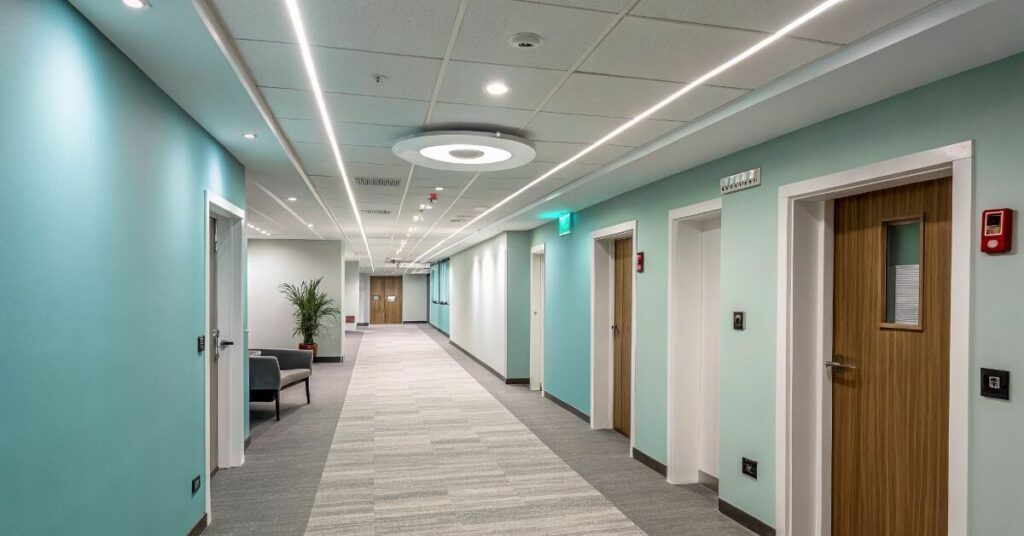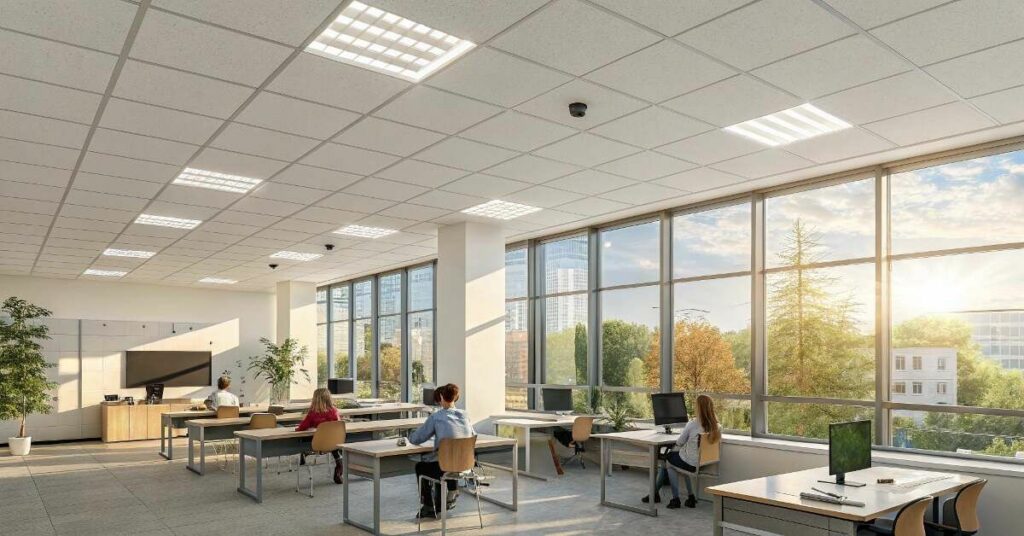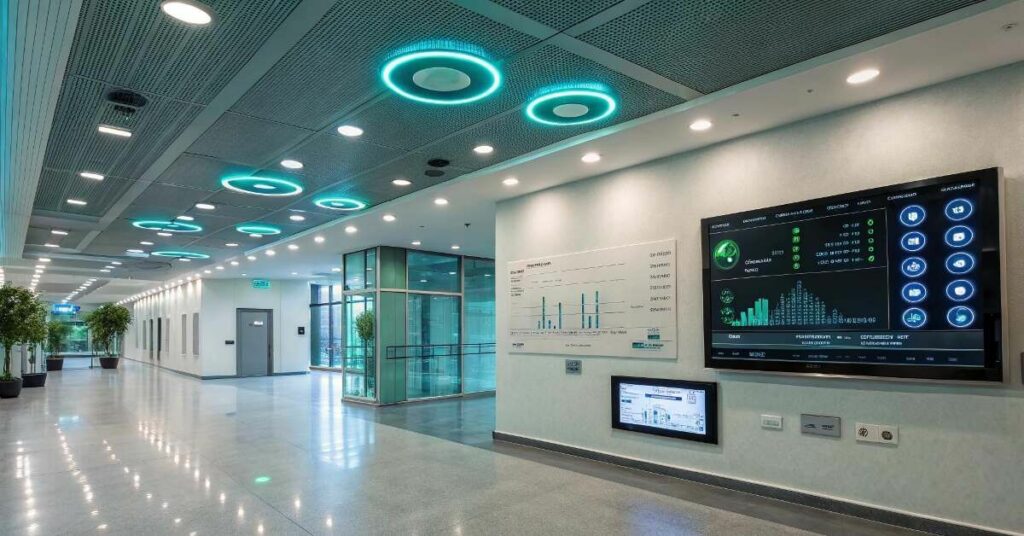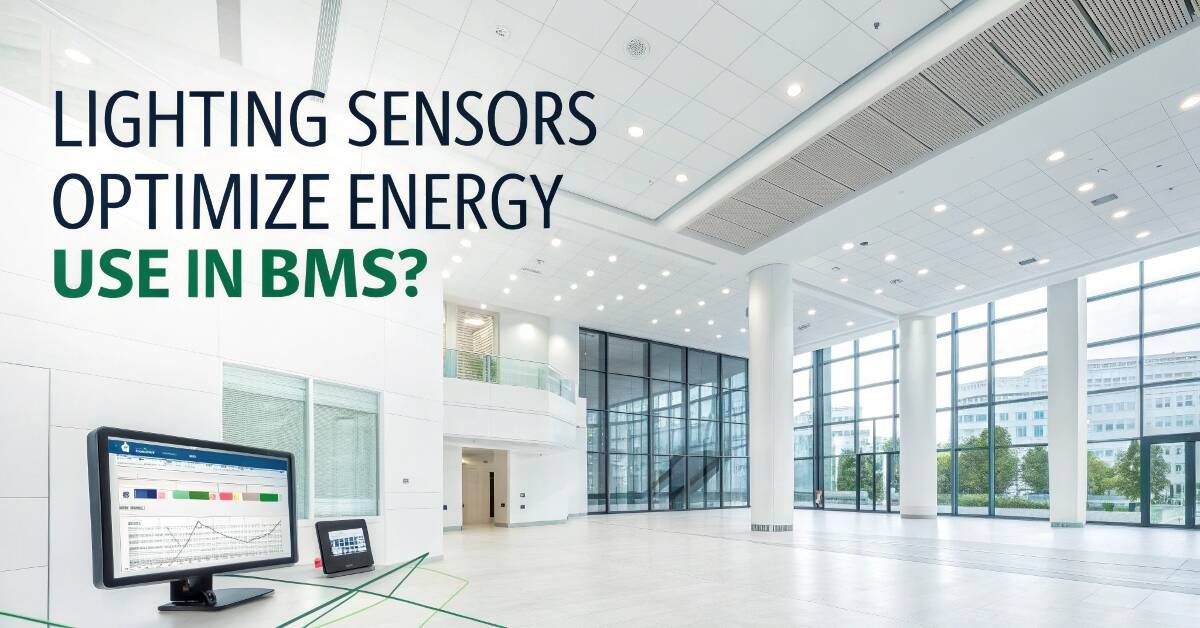BMS (Building Management System) sensors can be used to lighten the energy bills without affecting the comfort. They make sure that lights are only on when necessary as this will avoid wastage. It is an intelligent control that leaves spaces well-lit when in use and switches off when not in use, thus saving energy.
These sensors are in reaction to real-time conditions such as movement or level of daylight. Lights turn on and off automatically when anyone is entering or leaving a room. It is a touch free control of lighting that is responsive to your surroundings.
In the case of commercial and industrial buildings, it is a significant increase in efficiency. In warehouses, offices, and other places, intelligent lighting reduces expenses and promotes sustainability. It is a basic update with strong effects.
Table of Contents
ToggleWhat Are Lighting Sensors and Why They Matter in BMS?
Lighting sensors are important to BMS since the sensors automatically regulate the level of light depending on presence or ambient light. As one moves in a room, the lights come on. The artificial light is switched off or reduced when the daylight gets brighter. The intelligent reaction helps to have a comfortable and energy-saving atmosphere.
These sensors also assist in avoiding wastage of energy during the day. There will be no lights left on in an empty room or in the bright daylight. Consequently, buildings consume the amount of energy that they actually require. This saves money and makes operations greener as well.
Motion Sensors: Turning Lights Off When No One’s Around

Human presence can be detected by motion sensors and lights in unoccupied places can be switched off. There are automatic lights that switch off when there is no movement. Such a small step will help to avoid wasting energy and reduce the cost of electricity. It also eliminates the necessity to turn lights off with the help of people.
These sensors are perfect in areas which are not in constant use. They maintain the consumption of energy at a low level without compromising comfort or safety.
Common areas where motion sensors work best include:
- Restrooms
- Meeting rooms
- Hallways
- Storage rooms
- Break areas
Daylight Sensors: Using Natural Light to Your Advantage

The daylight sensors measure the amount of sunlight and lower the interior lighting levels. The system brings down artificial lighting when a room is flooded with natural light. This makes a comfortable and balanced brightness and does not waste energy. It is an intelligent approach to make nature work.
These sensors reduce the consumption of energy during the daytime without affecting visibility. Rooms are illuminated with fewer lights. The beneficiary areas include offices, schools and open areas. It is effective, smooth and excellent in long term savings.
Occupancy vs. Vacancy Sensors: What’s the Difference?
The occupancy sensor turns off and on the lights based on motion. The lights go on automatically when a person gets into a room. As soon as the room is cleared, the lights go out after some delay. This hands-free control makes this easy energy saving control possible.
Vacancy sensors are somewhat different. To switch the lights on, you have to do it manually, but they automatically turn off when no one is in the area. This gives more control and is energy saving.
Here’s a quick comparison:
Feature | Occupancy Sensor | Vacancy Sensor |
Turns lights on | Automatically with motion | Manually by user |
Turns lights off | Automatically when no movement | Automatically when no movement |
Best for | Busy or shared areas | Private or low-use rooms |
Integrating Lighting Sensors with BMS for Maximum Impact

Response time and reporting of energy are enhanced by the centralized control using BMS. The building has lighting sensors that are all linked to a single smart system. This configuration enables easy changes as well as monitoring of power consumption. It maintains lighting to be effective and real time oriented.
The BMS is fed with live data provided by sensors, which allow smart lighting strategies. The system memorizes patterns and regulates lighting itself. It lights up or darkens areas depending on the usage and the time of the day. This avoids higher energy bills and a more dynamic building condition.
Long-Term Benefits of Sensor-Based Lighting in BMS
Lighting in BMS lowers cost of operation and increases the durability of the light fittings by using a sensor. The lights are only used when they should be used thus saving wear and energy consumption. This will save the long term costs of maintenance and replacement. It is a clever way of safeguarding your investment.
It is also sure to promote greater sustainability and improved building performance. Less resources are consumed in buildings and therefore the carbon footprint is lower. Meanwhile, functionality and comfort are excellent. This eases the achievement of green building criteria and long run efficiency objectives.
FAQ’s
What role do lighting sensors play in a BMS's energy savings?
A BMS has lighting sensors that reduce the needless consumption of energy by adjusting the lighting according to the movement or the natural light.
What do the motion sensors in the energy optimization do?
Energy is consumed only when lights are needed in occupied areas, so unoccupied areas are darkened.
Are daylight sensors really make a difference?
Yes, they dim artificial lighting where there is sunlight reducing power consumption.
Conclusion
BMS lighting sensors give a convenient way of energy savings and do not reduce comfort. They work automatically according to movement and daylight and reduce wastage. The results of such intelligent control are cheaper bills and less maintenance requirements.
All these minor adjustments result in major changes with time. Buildings are made more efficient, sustainable and easy to manage. Sensor-based lighting leaves a long-lasting impression whether in offices, factories, or in the streets.

